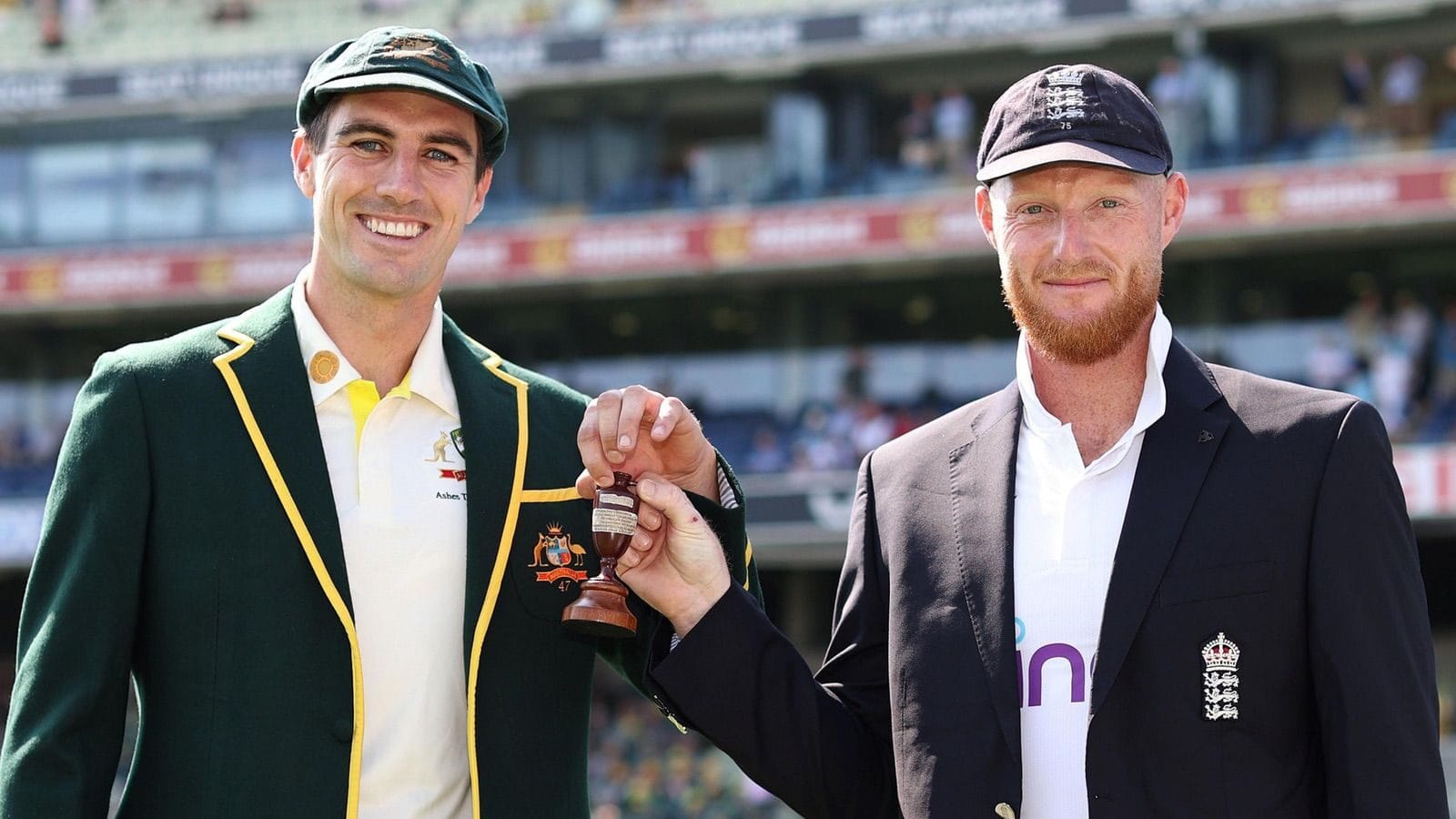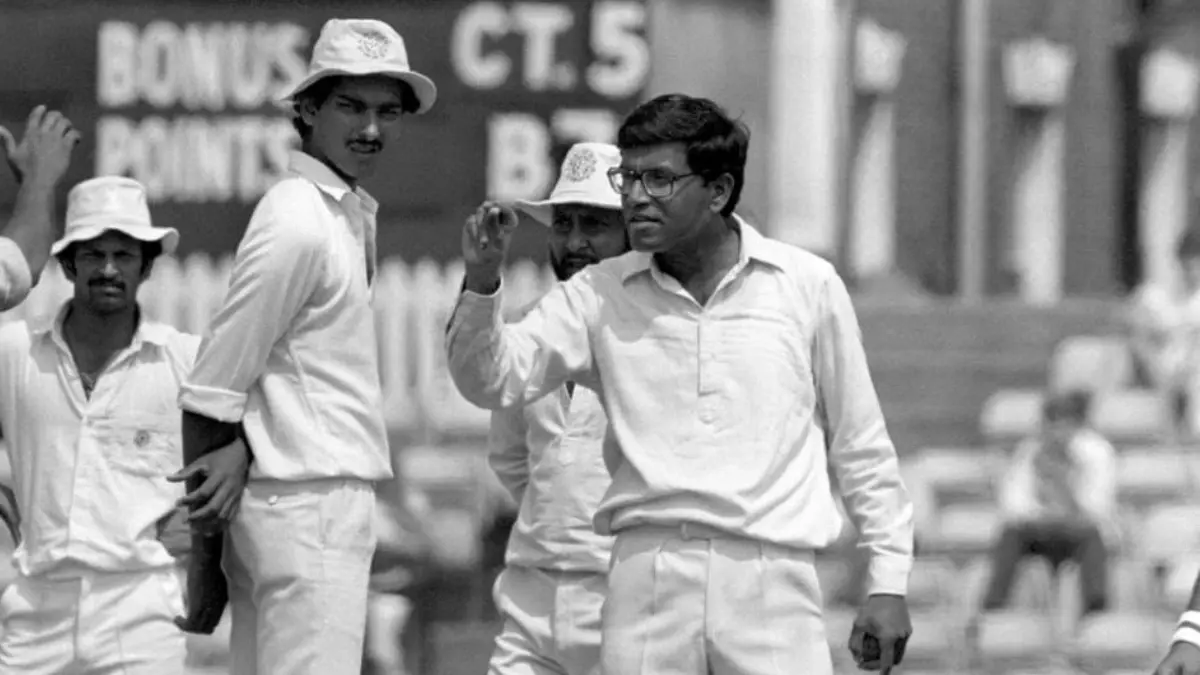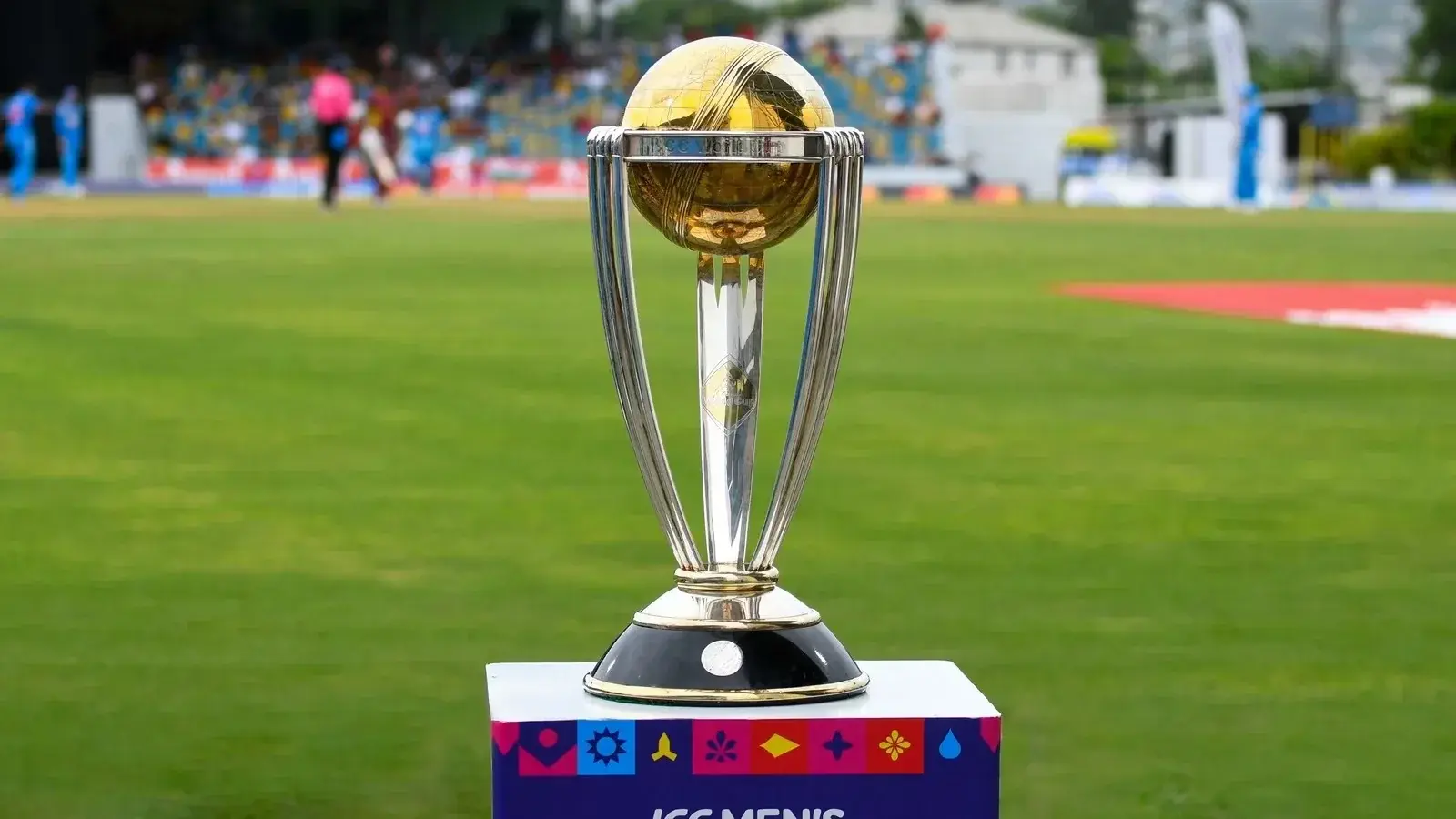The strangely shaped and incomprehensible patterned English cricket season has come to an end and all thoughts in relation to the men’s game are on The Ashes, with the first Test beginning in Perth on 21 November. There is extra anticipation this time because there is a – what can one call it? – not a feeling exactly, but a sort of nervous hope – that England might do better than on recent visits. Given that the last three series results Down Under have been Five-nil, four-nil and four-nil, one would think that that should be possible. (I am coming round to Stuart Broad’s view that the 2021-2022 series should be expunged from the records. It was heavily affected by COVID – there was a Test in Hobart for goodness’ sake. England kept the world game going during COVID at immeasurable cost to the players and to Joe Root’s captaincy; Australia did nothing.) England have played some wonderful cricket during the Baz McCullum / Ben Stokes era, which started soon after the 2021-22 series, including in the Ashes series of 2023, which England might have won three-two after being two-nil down but for rain at Manchester. Australia have not won a series in England for a quarter of a century.
But playing in Australia is different. The home side don’t lose unless they are going through a bad patch or – often the same thing – a transitional phase. If that is not the case, any hint of weakness in the opposition will be ruthlessly exploited. A lot of series in recent years have been one-sided.
There are exceptions of course. India have beaten Australia on two of their last three visits. In 2020-21, a full strength Australian side won the first Test at Adelaide by eight wickets, India being bowled out for 36 in their second innings. But the tourists, despite the enforced absence of a number of leading players, notably Virat Kohli, fought back sensationally to take the series two-one; Australia, most unusually looked out of their depth. (West Indies’ victory at Brisbane in January 2024 was equally extraordinary and showed that these things do happen.) India won in 2018-19 as well, but that was a bit different as Australia were without the banned Steve Smith and David Warner. But, in any event, we are not talking about India; we are talking about England.
Looking at England’s series wins in Australia since the First World War [Is that a big enough sample size? Ed] it is clear that Australia only lose at home when they are demonstrably weaker than the visitors, and the fact is that, for all sorts of reasons, that is usually just not the case.
In 2010-11, England were probably as strong as they have been at any time over the last fifty years or so, while Australia were a shadow of the side that had dominated the Test and one-day scenes for a decade and a half since the mid-1990s. Andrew Strauss’ England side, after struggling initially at Brisbane but drawing that game in a way which made it look like a win, trounced the Aussies three-one. Five England batsmen averaged over fifty, with Alastair Cook averaging 127; one Australian, Mike Hussey, did. Ricky Ponting played one Ashes series too many: he averaged nineteen in four Tests. Captain Michael Clarke averaged 21. Three England bowlers averaged under thirty; one Australian, Ryan Harris, did, though Mitchell Johnson burst into life at Perth and won the third Test there. Off spinner Graeme Swann played a key role with 15 wickets at 39. Xavier Doherty was Australia’s leading spinner with three wickets at 102. Smith made his Ashes debut as a leg-spinner who batted a bit.
You have to go back to 1986-87 for England’s next win. Australia were a poor side in the mid-1980s. Ian Chappell’s relentlessly aggressive team of the 1970s had gradually disappeared, culminating with the retirements of Greg Chappell, Dennis Lillee and Rod Marsh in 1984. Quality sides like that cannot be rebuilt overnight. Allan Border’s tourists had a rough time in England against a rampant David Gower in 1985. Mike Gatting was now in charge and things did not appear to start well. After some opening State games – they were proper tours in those days – journalist Martin Johnson famously remarked that there were only three things wrong with the tourists: “They can’t bat, they can’t bowl and they can’t field.” But they won the series two-one.
England still had Ian Botham, past his best but still with the almost hypnotic ability to outdo Australia that Shane Warne was later to exert over the Poms. Botham set out his stall with a century in the first innings of the series at Brisbane; England won the match by seven wickets. Australia, put into bat at the MCG on Boxing Day were bowled out for 142; Botham, who had missed the previous Test with a side strain, took five for 42 with medium pace trundles: England had an innings victory. Chris Broad made three centuries. Australia’s batting was much stronger than their bowling. Dean Jones averaged over fifty. Geoff Lawson and Craig McDermott, probably Australia’s best bowlers at the time, played one match each. Only Bruce Reid, with twenty wickets, regularly troubled the England batsmen; nobody else took more than ten. It was not one of the great Ashes series, and nobody has ever alleged that Gatting was one of the great England captains.
That claim has been made for Mike Brearley, but not in respect of the Ashes series of 1978-79, which England won five-one. The world’s best players, at least most of them, were playing in Kerry Packer’s World Series Cricket. England lost several leading players, including Tony Greig, Alan Knott and Derek Underwood; Australia lost an entire team. It showed. England were not flattered by the result. It was a tough series for batsmen. Only Gower averaged over 40 on either side; Graham Gooch and Geoffrey Boycott averaged 22 and 21 respectively. Five England bowlers, including Botham and Bob Willis, took at least 19 wickets at an average of under 25. The sensation, though was Australia’s Rodney Hogg, who took 41 wickets at 12 apiece.
Ray Illingworth, who led England to a two-one victory in 1970-71 is possibly more deserving of the accolade of England’s greatest captain, at least in this context. This victory is arguably England’s most impressive in the relevant period because they were not a demonstrably better side than Australia, as they were in the series mentioned so far. Three of the last four Ashes series had been drawn: Australia won the fourth, in England, in 1964, one-nil. The next series, in England in 1972, was also drawn. There was really nothing between the two sides, though the fact that the Australian management sacked the captain, Bill Lawry, with one match to go and the series still alive, suggests they may have thought otherwise. What made the difference was two generally great performances from England players. Opener Boycott made 657 runs at an average of 93, and received solid support from John Edrich and Brian Luckhurst at the top of the order. More critical even than that was the fact that England had a fast, smart, aggressive and persistent fast bowler in John Snow, who took 33 wickets at 22 apiece, including seven for 40 in 17.5 eight-ball overs in the win in the fourth Test at Sydney. That’s what you really need if you are going to win in Australia – you need a John Snow. It helps, of course, if the Aussies can’t respond in kind. That was the case in 1970-71. Lillee played in two Tests and looked good. Graham McKenzie, who had led the attack for a decade, took seven wickets at 50 apiece.
There was another canny and ruthless Yorkshireman in charge when England retained The Ashes in 1954-55. Len Hutton seemed to be making things difficult for himself when he put the home side in in the first Test at Brisbane and they made over 600 and won by an innings. But that was a misleading start. England thrashed Australia three-one. Unlike in 1970-71, but as in each of the other series discussed, England held the Ashes. They had won them under Hutton in 1953, and were to win them again in 1956. So they were fairly clearly the better side. Australia were ageing – key players Arthur Morris, Keith Miller and Ray Lindwall were all past their best though they all had their moments, and Miller was going to win another Ashes Test, at Lord’s in 1956. It must have been deeply satisfying for Hutton, who like all his contemporaries had been terrorised by the pace of Lindwall and Miller in four successive series since 1946-47, to be able to unleash the express pace of Frank Tyson at the opposition. Again, that is just what you need. Tyson took 28 wickets at 20, his opening partner Brian Statham took 18 at 27. The young amateur batsmen Peter May and Colin Cowdrey made some glorious looking runs. England were on top of the world.
England, or MCC, must have felt in a similar position at the end of the 1928-29 series. There are definite parallels. At the end of both World Wars Australia were a greatly superior side, winning three series with some ease. England managed a consolation victory at the end of the third series (1924-25 and 1950-51). By the fourth series (1926 and 1951) England were improving as Australia inevitably declined. There were four draws and finally a win for England at The Oval.
So again England were arguably the stronger side in 1928-29. They had an immensely strong batting line-up, including five of the seven heaviest run scorers in cricket history and two others who scored over a hundred first-class centuries. Walter Hammond made 905 runs in the series. Wickets were shared between the experienced fast-medium Maurice Tate, the paceman Harold Larwood, the medium pacer George Geary and the slow left-armer J C “Farmer” White. The young captain, Percy Chapman, was ahead of his time, a brilliant fielder who inspired others in the field.
England won the series four-one. Australia suffered a big setback in the first Test when the great all-rounder Jack Gregory was injured; he never played again. Australia’s team in the first four Tests was almost absurdly old: off spinner Don Blackie made his debut during the series at the age of 46, and left-armer Bert “Dainty” Ironmonger was the same age. Australia picked a much younger side for the fifth Test, and won it: Chapman did not play and England’s fielding let them down. The future looked better for the home side. A youngster from Bowral made his debut in the first Test at Brisbane. He failed and was dropped but returned for the third Test and scored two centuries in the series. His name was Don Bradman.
There remains one final series to mention. The elephant in the room: 1932-33; Bodyline…
As in 1928-29, England won four-one. Were they a demonstrably better side, as in 1928-29? Well, Australia won two-one in 1930. You didn’t have to be a highly paid analyst to spot the difference between the two sides: Bradman scored 974 runs at an average of 139.14. In 1934 in England the result was the same; Bradman scored 758 runs at an average of 94.73. Bradman was to lead Australia in four more Ashes series and Australia won all of them except the series in England in 1938 which was a one-all draw (the Manchester game was rained off and Bradman was prevented by injury from batting at The Oval, where Hutton made the then world record score of 364.
In 1932-33, Bradman, who missed the first Test through illness, made 390 runs at an average of 56.57, more runs at a higher average than any of his teammates. He had been reduced, in other words, to humanity. The explanation was a unique combination of great pace – Harold Larwood, in particular, in tandem with his Nottinghamshire opening partner, Bill Voce – inspired, guided and encouraged by the captaincy of a single-minded, ruthless and patrician Scot, Douglas Jardine. What made Bodyline different was Larwood’s extreme pace and accuracy – he had already, most unusually, played a critical role in two Ashes series wins, 1926 and 1928-29 – but also the cynical field placing with men crowding the leg side and ball after ball being targeted at the body. The law was soon changed to prevent this. Things really hotted up during the third Test at Adelaide when Australia’s captain famously complained to the MCC manager “Plum” Warner that there were two sides out there and only one of them was playing cricket. (Australia had nobody to fight back with. Having read David Tossell’s Blood On The Tracks, his account of the Ashes series of 1974-75, apart from the field placing, England’s batsmen facing Lillee and Jeff Thomson were no better off than Australia’s facing Bodyline.) The Bodyline story is rife with political, diplomatic and social undertones which cannot be done justice to here. Suffice it to say that Larwood never played for England again. The main point here is that it can take something very special for England to win in Australia.
So is the current England side demonstrably better than Australia. In England the answer is probably yes. Even in England, though, they can be inconsistent, and their record away from home is patchy at best, with recent losses in India and Pakistan. But Australia do not seem quite the force they were. They lost the World Test Championship Final to South Africa but they fought back strongly to beat India at home. They are an ageing side. Usman Khawaja is almost ancient for an Australian Test cricketer of modern times. The batting does look a bit vulnerable. And can their justifiably revered bowling quartet go on for ever? There are concerns about captain Pat Cummins’ fitness.
Do England have the players to exploit these possibilities? Jofra Archer and Mark Wood are both in the squad. In 1970-71, Snow had bowled 225.5 eight-ball overs in six Tests; that is the equivalent of 300 six-ball overs. It is hard to imagine Archer and Wood managing that workload jointly, let alone individually. Archer played four tests against Australia in 2019 and bowled 156 overs. (Perhaps the England management should consult Snow about his fitness regime.)
And who is going to get the necessary runs? England, as we all know, have a very attractive batting line up. Sadly, though, attractiveness is not enough. To give themselves the best chance of winning Root must have the series of his life. He is the one batsman with the technique, temperament and experience to first weather and then dominate the Australians.
Root can’t do it all on his own and of course he doesn’t have to. England are lucky enough to possess the most remarkable cricketer of his generation, who has the opportunity, in what has already been a dazzling career, to cap it all with what would be a career defining achievement. Top level cricket is a deeply selfish environment, like you level everything else but sport and especially cricket encourage bare-knuckle selfishness in all sorts of ways. For such an extreme achiever, Stokes doesn’t seem selfish at all. He cares more about his team than he cares about himself, sometimes to England’s cost, as when he had to miss the final Test against India a few months ago. He has Brearley’s man management skills and Illingworth’s cricket brain. If any captain can win a series in Australia, it’s Ben Stokes.





2 comments
Malcolm Merry
In recent years the weather in eastern Australia has been wetter and the pitches more responsive to seam bowling than before so accurate medium fast bowling may play a bigger part than historically. Australia has Boland but England, with Anderson and Woakes forced into retirement and no Botham or Bedder, is putting all its money on pace. If historical precedent is needed, 1950-1, a wet summer, would do.
Ed Ion
Thanks for that superb overview Bill
That John Snow stat is incredible!
What an unbelievable workhorse !
I suspect we shall never see that kind of bowling intensity again
Ed